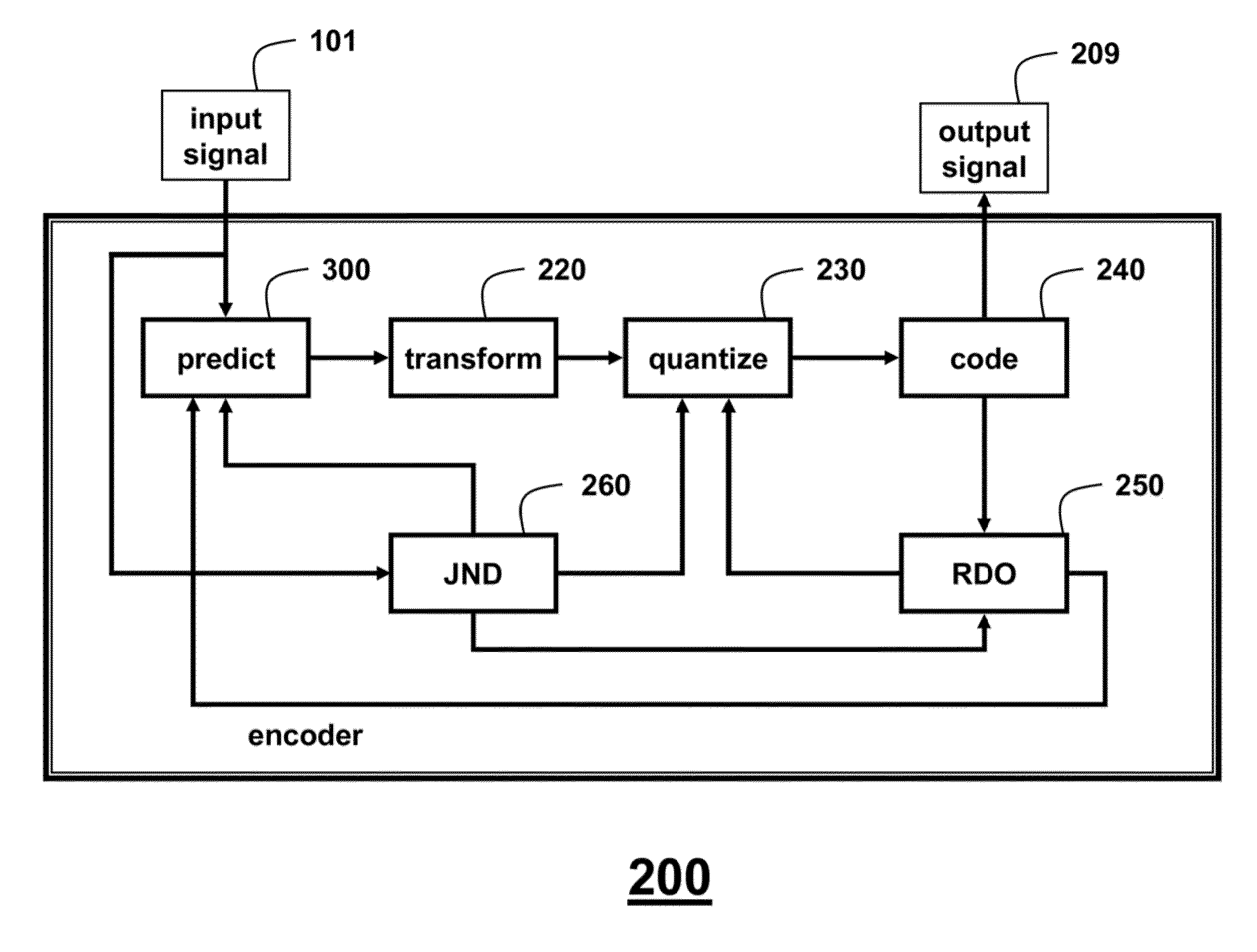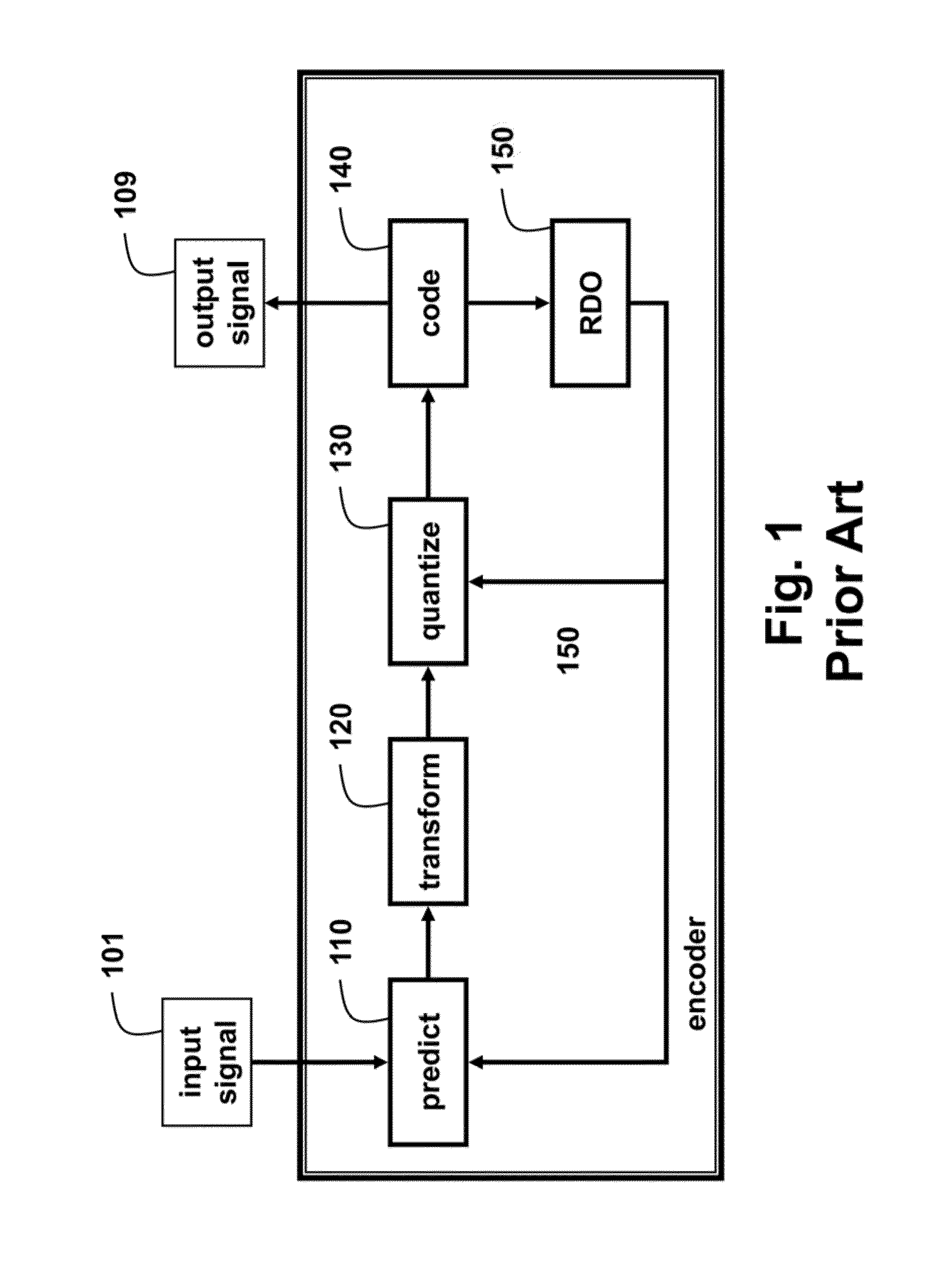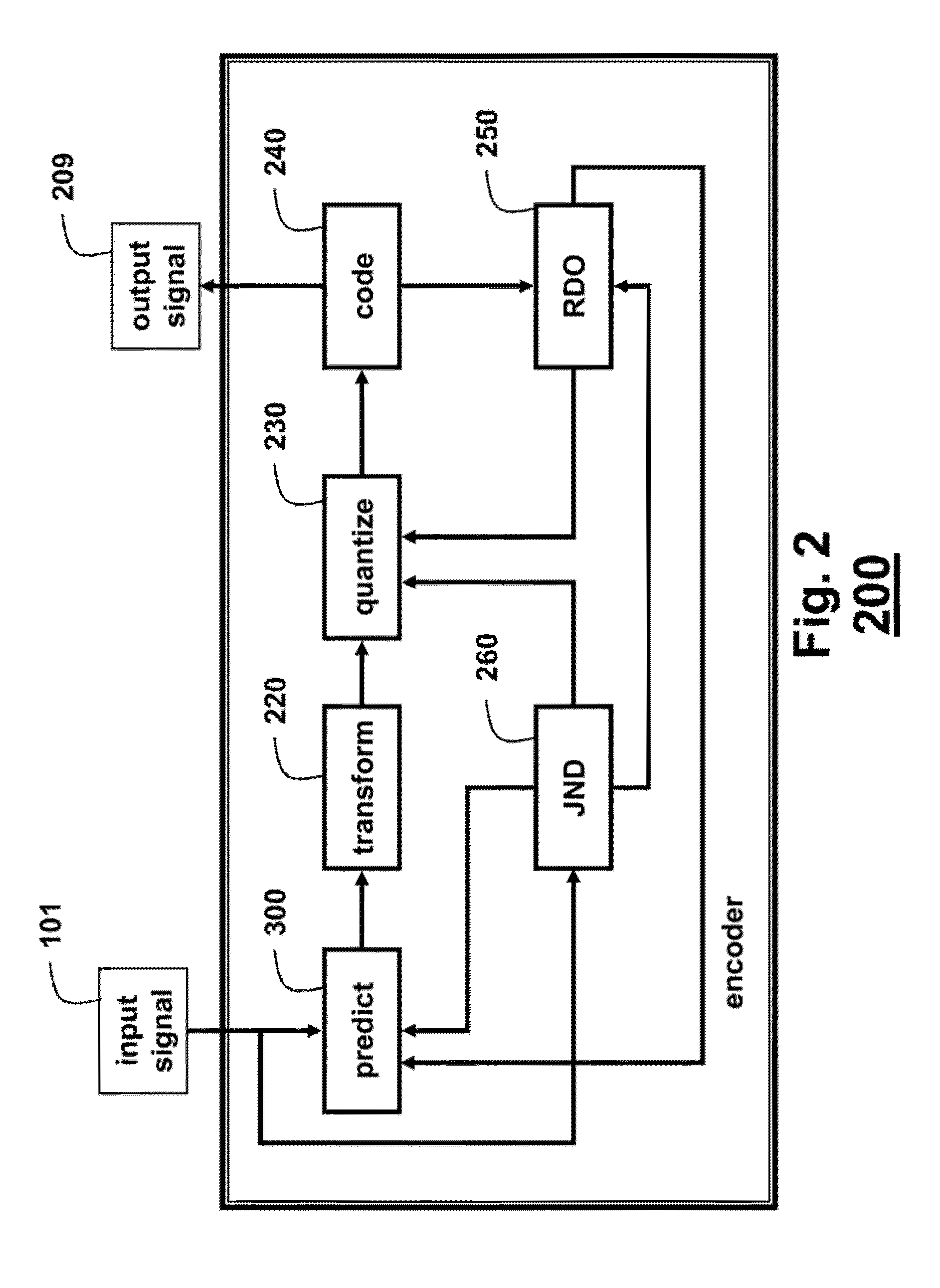Perceptually coding images and videos
a technology of perception and image, applied in the field of coding images and videos, can solve the problems of inability to fully consider human perception aspects that affect hvs cannot measure distortion that cannot be perceived by the hvs, and the metric of distortion does not fully consider the visibility of distortion, etc., to achieve the effect of high efficiency
- Summary
- Abstract
- Description
- Claims
- Application Information
AI Technical Summary
Benefits of technology
Problems solved by technology
Method used
Image
Examples
Embodiment Construction
[0060]Embodiments of our invention provide a system and a method for coding an image or video, in other words a sequence of (one or more) images. As used herein coding can include encoding, decoding or both, as in an encoder, decoder or codec.
[0061]In contrast with the prior art, we apply perceptual based metrics to determine a perceptually-optimal prediction, jointly with a perceptually adjusted quantizer.
[0062]Encoder
[0063]FIG. 2 shows the modules or processing steps in an encoder 200 according to embodiments of the invention.
[0064]Prediction 300 is applied to the input signal 101, e.g., a next block to be coded in an image or video (the sequence of one or more images), followed by a transformation 220, quantization 230, and coding 240 to produce an output signal 209, e.g., a compressed image or video, with an improved perceptual quality. Feedback from RDO 250 is used for the predition and quantization.
[0065]The input signal is also provided to a Just-Noticeable-Distortion (JND) m...
PUM
 Login to View More
Login to View More Abstract
Description
Claims
Application Information
 Login to View More
Login to View More - R&D
- Intellectual Property
- Life Sciences
- Materials
- Tech Scout
- Unparalleled Data Quality
- Higher Quality Content
- 60% Fewer Hallucinations
Browse by: Latest US Patents, China's latest patents, Technical Efficacy Thesaurus, Application Domain, Technology Topic, Popular Technical Reports.
© 2025 PatSnap. All rights reserved.Legal|Privacy policy|Modern Slavery Act Transparency Statement|Sitemap|About US| Contact US: help@patsnap.com



